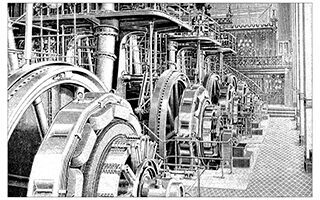
Texas electricity first came in the early 1880s, 15 years or so after the end of the Civil War. The first power plant was built in Galveston. A handful of other areas followed suit over the next 20 years. These plants ran on steam or the rushing water of dams.
By the 1890s, power was mostly being made and used in cities. Houston, San Antonio, El Paso, Dallas/Fort Worth and Austin would have been aglow at night from electric lights in homes. Growth in rural areas was slow and wouldn’t take off until the 1930s. This is when federal loans to such places became available.
Thanks to a deal put in place by then-President Franklin Delano Roosevelt, farmers began forming rural electric cooperatives across the nation in 1936. By 1945, more than a million Texas residents had power in their homes.
At about this same time, several utilities came together to form the Texas Interconnected System (TIS). This group was formed to aid in the war effort during World War II. Under TIS, excess power was sent to companies that made such things as ammunition and aircraft parts. But that wasn’t the only good thing to come from it.
The utility companies saw the efficiency in being linked in such a way. In 1970, TIS representatives created the Electric Reliability Council of Texas (ERCOT). This entity would later absorb TIS and other utilities and grow to form the Texas electricity grid.
In the early 1990s, Texas voted to restructure the wholesale electricity market. And in 1999, the retail market was changed, as well, creating energy choice. For the first time, Texas residents had a say in who provided their electricity.
Today, electricity use in Texas is at an all-time high. And production has moved beyond steam and rushing water. Power is delivered to an estimated 27 million people each day. It’s made by such things as natural gas, coal, oil, nuclear power, wind and solar. And trends have electricity production moving toward ever more sustainable methods.


